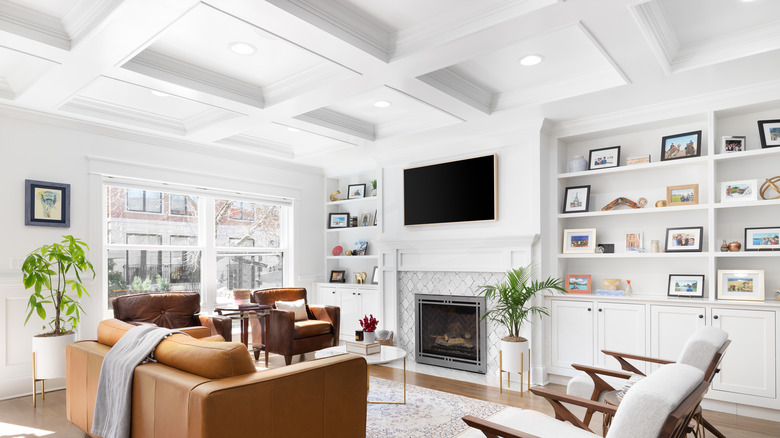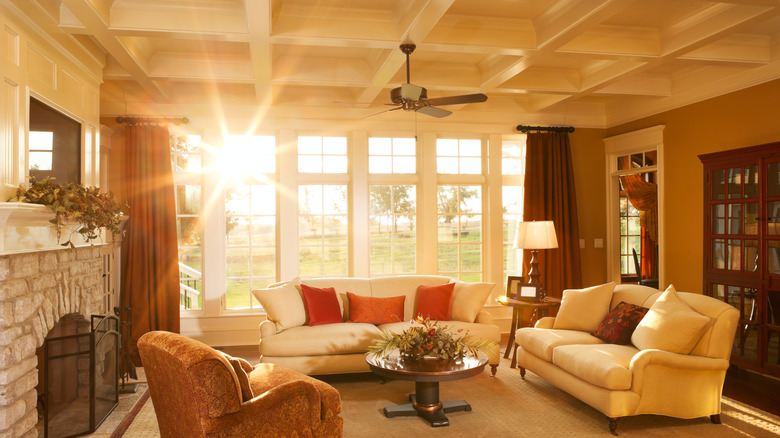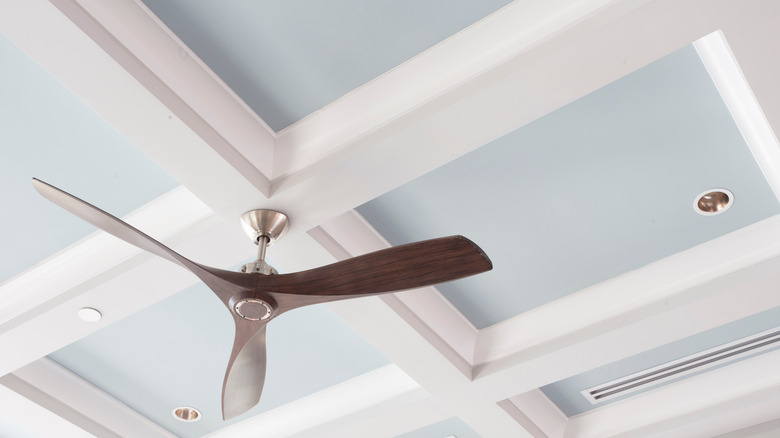How To Know If A Coffered Ceiling Is Right For Your Space
If you feel inspired to update your home's interior and have begun researching new design trends, decorating the ceiling is a great place to start. This space can be an overlooked opportunity to bring style into a room, and an architectural detail such as a coffered ceiling might be just the change your home needs. Derived from the Greek term for basket, a coffered ceiling is formed by beams that cross at right angles to create a pattern of boxes and recessed panels across the space overhead. This technique is found in ancient Greek and Roman architecture, and it communicates a feeling of luxury and elegance. To create a similar effect in your own home, it's necessary to take two factors into account before you begin: what kind of beams to select and how to plan your budget.
The traditional method of constructing a coffered ceiling is to use heavy beams in rooms of great height. One problem with this method is that it excludes any room measuring less than 9 feet tall, not to mention the fact that the structural support required to maintain the weight of the beams is very expensive. Today there are improved ways to create the beautiful effect of this architectural style in rooms of different heights and at a reduced cost. Here are several options to keep in mind as you consider whether a coffered ceiling is right for your home.
Choose modern materials
Those who love the look of a coffered ceiling and the sense of spaciousness that it provides may be concerned about how practical it is to install heavy pieces of lumber on the ceilings of their homes. Thankfully, there are now a variety of materials and styles to choose from to create the coffered effect. For instance, choosing faux wood beams instead of solid beams will make them much easier to install. Faux wood beams are also considerably lighter than real beams, they don't require as much structural support, and they're not susceptible to damage from insects or water leaks like real wood is.
Homeowners with lower ceilings also have options. Flat planks or ceiling panels can be arranged in the same geometric design of the traditional coffered square pattern, but they will not infringe on the area below. In a room where heavy beams might make a space feel claustrophobic or too enclosed, using flat planks or panels for the material will serve the same purpose but will be more appropriate in the space.
Plan your budget
Using lightweight materials is much less expensive than using solid wood, and the support needed to reinforce the structure will be less expensive as well. When decorating your home on a budget, keep in mind that it may be necessary to consult with a professional for the installation, however, saving money on the construction supplies can offset this expense. The process of using lighter materials will cost a fraction of the expense of the traditional method, but the result will be just as spectacular.
The importance of including the ceiling in home design has become a priority for many interior designers, such as Steven Gambrel in New York (per The New York Times). He says, "To leave the ceiling behind — when you've resolved the other surfaces in a room — seems not only unfortunate, but also throws off the balance." Another designer named Corey Damen Jenkins adds that he often begins by designing the ceiling before he focuses on the rest of the room. "The ceiling is the only plane that's unobstructed by artwork and furniture," he points out. A coffered ceiling has a sophisticated way of making a room feel finished. With modern materials that are practical as well as affordable, this timeless look could be just right for your home as well.


